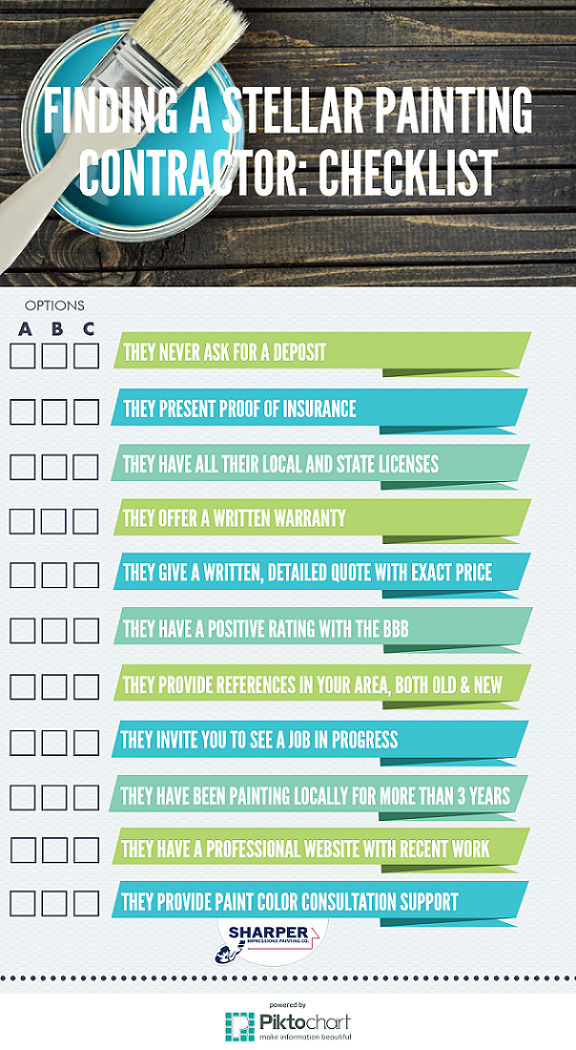The Function Of Weather In Commercial Exterior Painting: What You Need To Know
The Function Of Weather In Commercial Exterior Painting: What You Need To Know
Blog Article
Short Article By-Duke Stiles
When you're planning a commercial external paint job, don't underestimate the effect of weather on your outcomes. You need to think about elements like temperature level, moisture, and precipitation, as they can make or break your paint job. As an example, did you recognize that excellent problems call for specific temperature level varieties and moisture degrees? Stopping working to keep track of these aspects can lead to unequal finishes or even damages to fresh paint. Comprehending these aspects is crucial to attaining a resilient, specialist outcome. So, what specific climate condition should you be wary of?
Temperature level Considerations
When it concerns industrial outside painting, temperature plays a crucial duty in the end result of your task. If you're painting in severe warm, the paint can dry as well swiftly, leading to concerns like inadequate adhesion and unequal coatings. You wish to aim for temperatures between 50 ° F and 85 ° F for the best results. Below 50 ° F, paint may not treat appropriately, while over 85 ° F, you take the chance of blistering and cracking.
Timing your project with the appropriate temperatures is vital. Beginning your job early in the early morning or later in the afternoon when it's cooler, especially during warm months.
Also, think about the surface temperature; it can be significantly greater than the air temperature, specifically on bright days. Utilize a surface area thermostat to check this prior to you begin.
If temperature levels are unpredictable, keep an eye on the weather report. Abrupt temperature level declines or heat waves can thwart your strategies. You do not want to begin painting just to have the problems change mid-project.
Moisture Levels
Moisture degrees substantially affect the success of your commercial outside painting task. When https://www.womanandhome.com/homes/mistakes-to-avoid-when-painting-with-dark-colors/ is too high, it can prevent paint drying out and treating, causing a range of issues like bad bond and end up quality.
If you're planning a job during damp conditions, you may locate that the paint takes longer to completely dry, which can extend your job timeline and increase costs.
Alternatively, reduced humidity can also posture difficulties. Paint may dry as well promptly, preventing proper application and leading to an unequal finish.
You'll intend to keep track of the moisture degrees very closely to ensure you're working within the suitable variety, typically in between 40% and 70%.
To get the very best results, take into consideration making use of a hygrometer to measure moisture prior to beginning your job.
If you locate the levels are outside the ideal range, you might need to change your routine or pick paints created for variable conditions.
Always get in touch with the maker's standards for specific suggestions on humidity tolerance.
Rainfall Influence
Rain or snow can substantially disrupt your business outside painting plans. When rainfall takes place, it can get rid of freshly applied paint or develop an irregular finish. Ideally, you want to pick days with completely dry climate to guarantee the paint adheres properly and remedies properly. If https://arthuremvdl.glifeblog.com/32279150/appreciate-how-paint-methods-can-revolutionize-little-settings-unveiling-strategies-that-cultivate-an-impact-of-better-room captured in a shower, it's best to stop the project and await conditions to improve.
In addition, snow can be much more harmful. Not only does it develop a wet surface, yet it can additionally decrease temperatures, making it hard for paint to dry. This can lead to problems like peeling off or blistering down the line.
It's crucial to check the weather forecast before beginning your project. If rain or snow is forecasted, consider rescheduling.
Always bear in mind to allow appropriate drying out time between coats, especially if the climate continues to be uncertain.
Final thought
In conclusion, watching on the weather condition is vital for an effective commercial exterior paint project. By keeping track of temperature level, humidity, and rainfall, you can guarantee the very best conditions for application and treating. Keep in mind to prepare your work around positive weather and constantly comply with manufacturer guidelines. With the appropriate approach, you'll attain a long-lasting, lovely coating that can withstand the aspects. Don't let the climate catch you off-guard-- stay notified and repaint smart!
